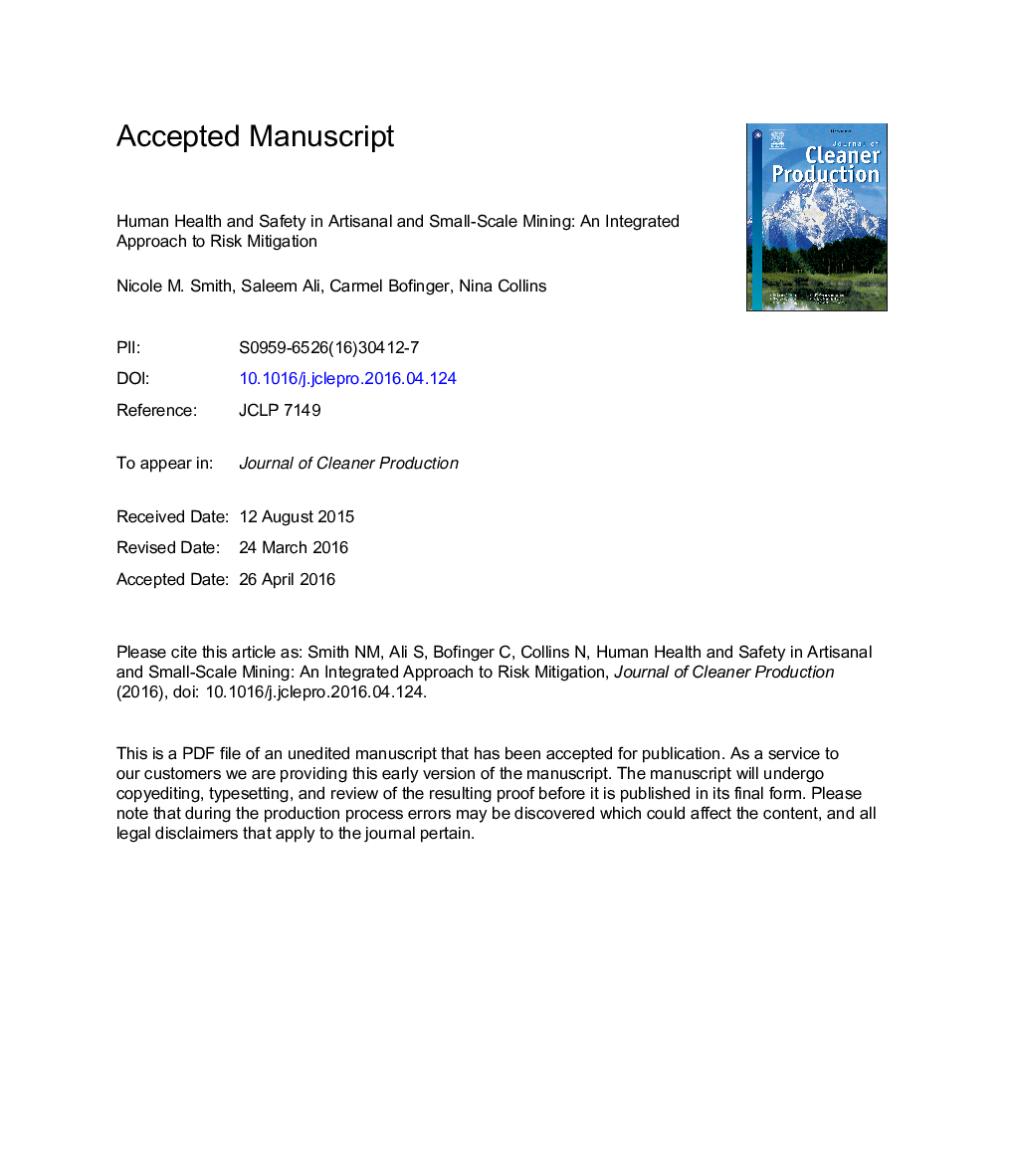| Article ID | Journal | Published Year | Pages | File Type |
|---|---|---|---|---|
| 8101827 | Journal of Cleaner Production | 2016 | 26 Pages |
Abstract
Artisanal and small-scale mining (ASM) is a critical poverty reduction strategy for millions of people around the world; however, it is notoriously dangerous. While there is an awareness of the dangers associated with ASM activities, with the exception of mercury contamination from artisanal gold mining activities, health and safety risks among artisanal miners, their families, and their communities have not been fully addressed in the scholarly literature or by regulatory institutions in countries where ASM is prevalent. This article applies a participatory action framework and draws from three different but complementary data sources, including a survey administered to ASM scholars and practitioners, data gathered from participants in Australian Government-sponsored short courses at the University of Queensland (UQ), and interactions between scholars from UQ and Mongolian mine inspectors, to demonstrate the growing significance of an integrated research approach to understand the full scope of health and safety risks facing the ASM sector. It also reveals some of the practical challenges to mitigating health and safety risks, specifically capacity building among regulatory agencies who work with limited resources to meet the inspection requirements of both the large- and small-scale mining sectors. This article concludes that research on health and safety issues in the ASM sector must incorporate a more holistic and regional approach with both qualitative and quantitative data collection methodologies.
Related Topics
Physical Sciences and Engineering
Energy
Renewable Energy, Sustainability and the Environment
Authors
Nicole M. Smith, Saleem Ali, Carmel Bofinger, Nina Collins,
